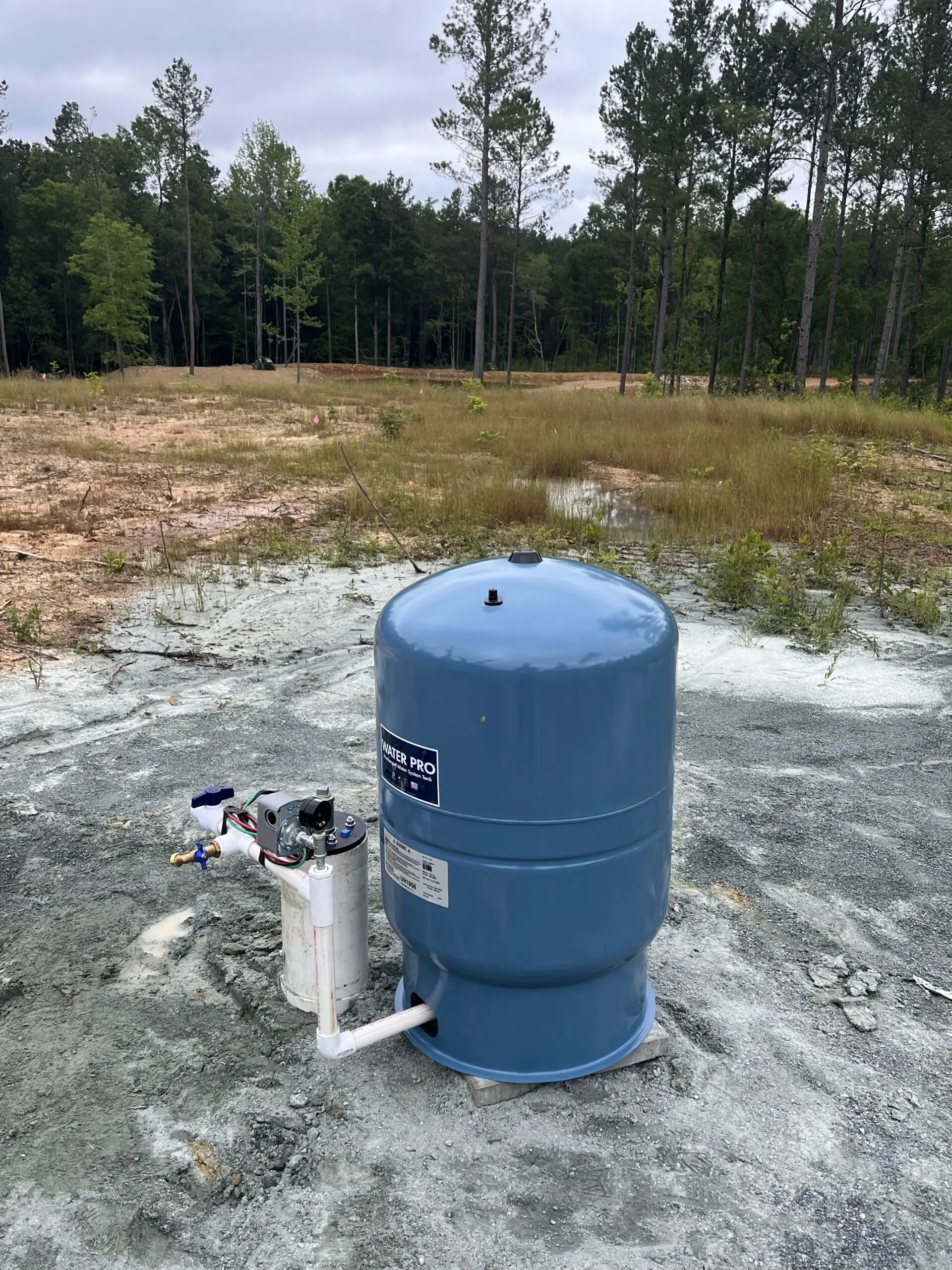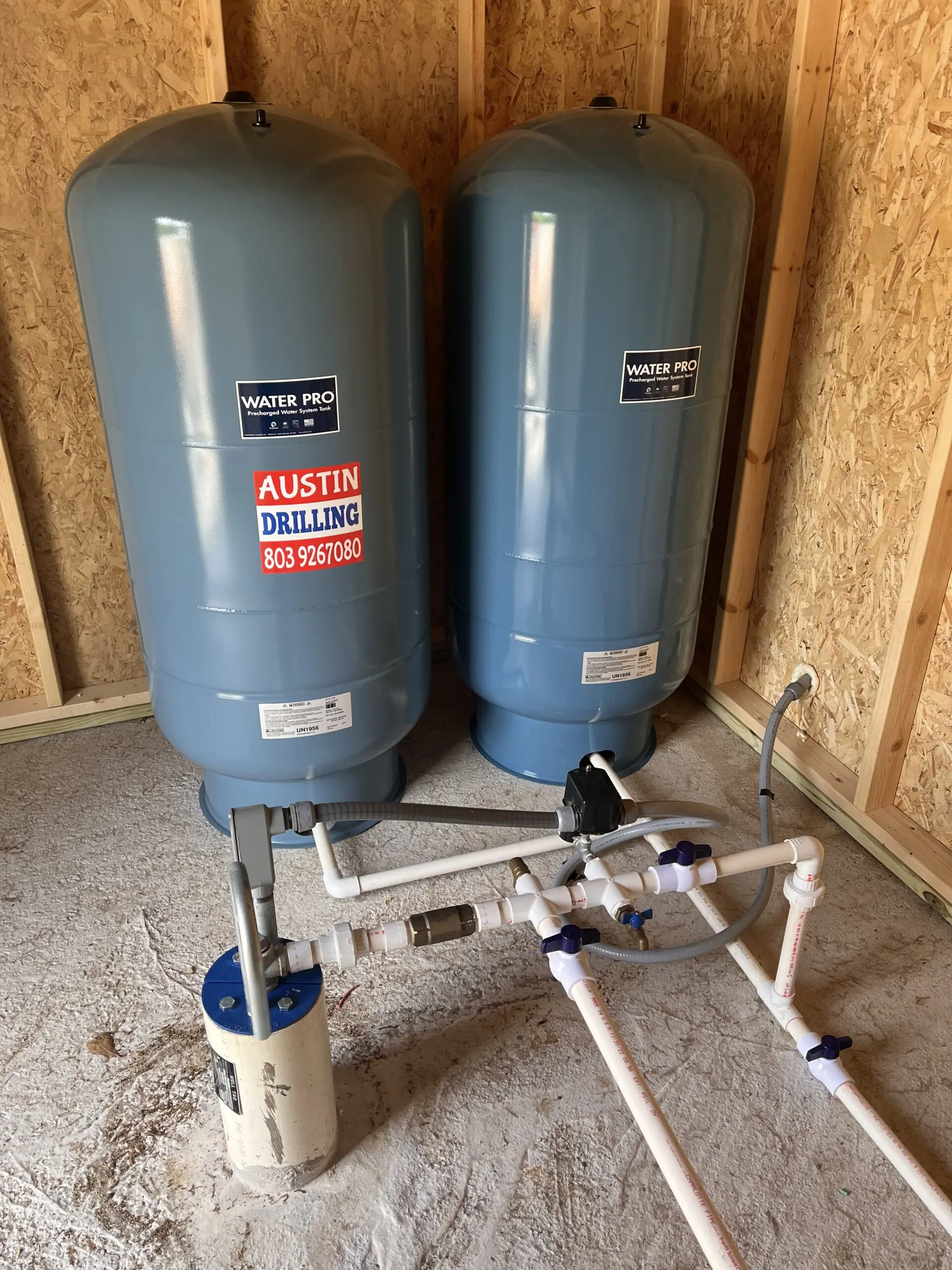
Reverse osmosis is a highly effective water purification process that removes impurities and contaminants to ensure clean and safe drinking water.
Our team of skilled professionals at Austin Drilling & Well Repair is experienced in installing, maintaining, and repairing reverse osmosis systems. We understand the importance of having a reliable source of clean water, and our expertise allows us to deliver top-notch services to our valued customers.
Reverse osmosis works by forcing water through a semipermeable membrane, which effectively filters out impurities such as bacteria, viruses, dissolved solids, and chemicals. The result is fresh, pure water that meets the highest quality standards.
Whether you need a new reverse osmosis system installed or require maintenance and repairs for an existing one, our team is equipped to handle all your needs. We offer personalized solutions tailored to your specific requirements and ensure that your reverse osmosis system operates efficiently and effectively.
Choose Austin Drilling & Well Repair for reverse osmosis needs, and let us ensure that you have access to clean and pure water for your home or business.
How Does Reverse Osmosis Work?
Reverse osmosis (RO) is a water purification process that utilizes pressure to remove impurities and contaminants from water, ensuring a high level of purity. At Austin Drilling & Well Repair, we understand the intricacies of how reverse osmosis works and provide expert services to our customers.
The process of reverse osmosis involves several key components. First, a pre-filtration stage is employed to remove larger particles, sediments, and debris from the water. This step helps protect the delicate semi-permeable membrane that is central to the reverse osmosis process.
Next, the water is pressurized and passed through the semi-permeable membrane. This membrane has extremely small pores that allow water molecules to pass through while blocking larger particles and contaminants. As a result, impurities such as bacteria, viruses, dissolved solids, salts, chemicals, and heavy metals are effectively separated from the water.
The purified water that passes through the membrane is known as the permeate, while the concentrated impurities are referred to as the reject or brine. The reject water, along with the impurities it contains, is diverted away from the clean water supply.
To optimize the efficiency of the reverse osmosis process, a storage tank is typically used to collect the permeate. This allows for a continuous supply of clean water, even when the demand is low or when the reverse osmosis system is not actively producing water.
At Austin Drilling & Well Repair, we ensure that all the necessary components of a reverse osmosis system, including the pre-filtration stage, membrane, and storage tank, are properly installed, maintained, and repaired. Our skilled professionals are well-versed in the inner workings of reverse osmosis technology and are equipped to handle any water treatment needs.
The Benefits
Reverse osmosis (RO) offers numerous benefits when it comes to water purification, making it a popular choice for residential, commercial, and industrial applications. Here are some of the key advantages of using reverse osmosis systems:
- High Water Purity: Reverse osmosis effectively removes a wide range of impurities, including bacteria, viruses, dissolved solids, salts, chemicals, and heavy metals. This ensures that the water produced is of high purity and safe for consumption.
- Improved Taste and Odor: RO systems significantly improve the taste, odor, and overall quality of water by eliminating unpleasant substances that can affect its flavor and smell.
- Health and Safety: By removing harmful contaminants, reverse osmosis provides a reliable source of clean drinking water, promoting better health and reducing the risk of waterborne diseases.
- Cost-Effective: Installing a reverse osmosis system can be cost-effective in the long run. It eliminates the need for purchasing bottled water, saving money and reducing plastic waste.
- Versatility: Reverse osmosis systems can be customized to meet various water treatment needs, ranging from small residential systems to large-scale commercial or industrial applications.
- Environmental Friendliness: Reverse osmosis reduces reliance on single-use plastic bottles and helps minimize plastic pollution. It is an eco-friendly alternative to bottled water.
- Easy Maintenance: RO systems are relatively low-maintenance, requiring periodic filter changes and basic cleaning. Routine maintenance ensures optimal performance and prolongs the lifespan of the system.
At Austin Drilling & Well Repair, we recognize these benefits and strive to deliver top-quality reverse osmosis solutions that meet the unique needs of our customers, providing them with clean, safe, and great-tasting water.
What Chemicals Does It Remove?
Reverse osmosis (RO) is highly effective in removing various chemicals from water, ensuring a higher level of purity. Some of the common chemicals that reverse osmosis systems can remove include:
- Chlorine: Chlorine is commonly used as a disinfectant in municipal water treatment. RO systems can effectively remove chlorine, eliminating its taste, odor, and potential health risks.
- Fluoride: Fluoride is added to many water supplies to prevent tooth decay. However, some individuals may prefer to reduce their fluoride intake. Reverse osmosis can help remove a significant portion of fluoride from water.
- Lead: Lead is a toxic metal that can enter water through old plumbing systems or industrial processes. RO systems can effectively remove lead particles, safeguarding against lead contamination.
- Arsenic: Arsenic is a naturally occurring element that can be found in groundwater. Long-term exposure to arsenic in drinking water can pose health risks. Reverse osmosis is capable of removing arsenic, ensuring safer drinking water.
- Nitrates: Nitrates are commonly found in agricultural areas and can leach into groundwater. High levels of nitrates in drinking water can be harmful, particularly to infants. RO systems can help remove nitrates, providing healthier water.
- Volatile Organic Compounds (VOCs): VOCs are a wide range of chemicals found in various household products, industrial processes, and pollution. Reverse osmosis can effectively remove many VOCs, improving water quality.
It’s important to note that while reverse osmosis is effective in removing these chemicals, the specific removal efficiency may vary depending on the system’s design, membrane quality, and other factors.
Consulting with a water treatment professional, such as the experts at Austin Drilling & Well Repair, can help determine the suitability of reverse osmosis for your specific chemical removal needs.
Advantages & Disadvantages
Advantages of Reverse Osmosis (RO)
- Pure Water: Reverse osmosis effectively removes a wide range of impurities, providing clean and safe drinking water that meets high purity standards.
- Improved Taste and Odor: RO systems eliminate unpleasant tastes and odors caused by contaminants, resulting in better-tasting and more enjoyable water.
- Health and Safety: By removing harmful substances such as bacteria, viruses, and chemicals, reverse osmosis helps protect against waterborne diseases and promotes better health.
- Versatility: RO systems can be customized to fit various applications, including residential, commercial, and industrial settings, making them adaptable to different water treatment needs.
- Cost-Effective: Although the initial installation cost of an RO system can be higher, it can be cost-effective in the long run. It eliminates the need to purchase bottled water, saving money and reducing plastic waste.
Disadvantages of Reverse Osmosis (RO)
- Water Wastage: RO systems produce a certain amount of wastewater during the purification process. This can be a concern in areas where water scarcity is an issue, as it leads to a loss of water resources.
- Energy Consumption: Reverse osmosis requires energy to operate, typically in the form of electricity to power the system and generate the required pressure. This can contribute to increased energy consumption and associated costs.
- Removal of Beneficial Minerals: While reverse osmosis effectively removes contaminants, it also removes beneficial minerals present in water, such as calcium and magnesium. Some people prefer to have these minerals in their drinking water for health benefits.
- Maintenance and Filter Replacement: RO systems require regular maintenance, including periodic filter replacement, to ensure optimal performance. This ongoing maintenance can add to the overall cost and effort required to maintain the system.
It’s important to note that the advantages and disadvantages of reverse osmosis should be considered in relation to specific circumstances and individual preferences.
Consulting with a water treatment professional, like Austin Drilling & Well Repair, can help determine whether reverse osmosis is the right choice for your water purification needs.
More About Well Water Filtration:
- Carbon Well Water Filtration System
- Granular Activated Carbon System
- Ion Exchange Well Water Filtration System
- Sediment Well Water Filtration System
- UV Well Water Filtration System
- Water Softeners
Call Us Today!
Whether you need a new reverse osmosis system installed in your home or business, or if you require maintenance and repairs for an existing system, we have the knowledge and experience to deliver exceptional service. Our goal is to ensure that you have access to clean, pure, and great-tasting water.
Don’t hesitate to reach out to us today at Austin Drilling & Well Repair. We are eager to discuss your reverse osmosis needs, answer any questions you may have, and schedule a consultation or service appointment at your convenience.
Experience the benefits of reverse osmosis with our reliable and professional services. Call us now!
What Does Well Shocking Remove From Your Water?
Well shocking, also known as well disinfection or chlorination,
Water Well Inspection Checklist
Your Comprehensive Water Well Inspection Checklist: Ensuring a Safe




